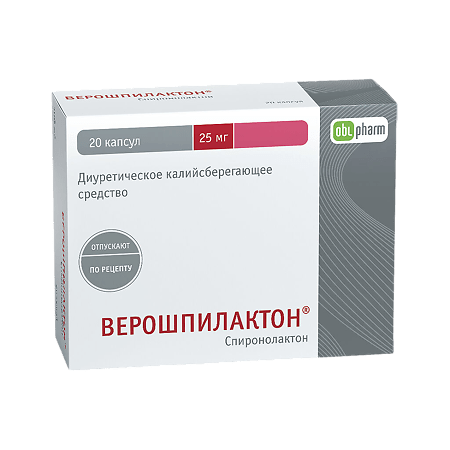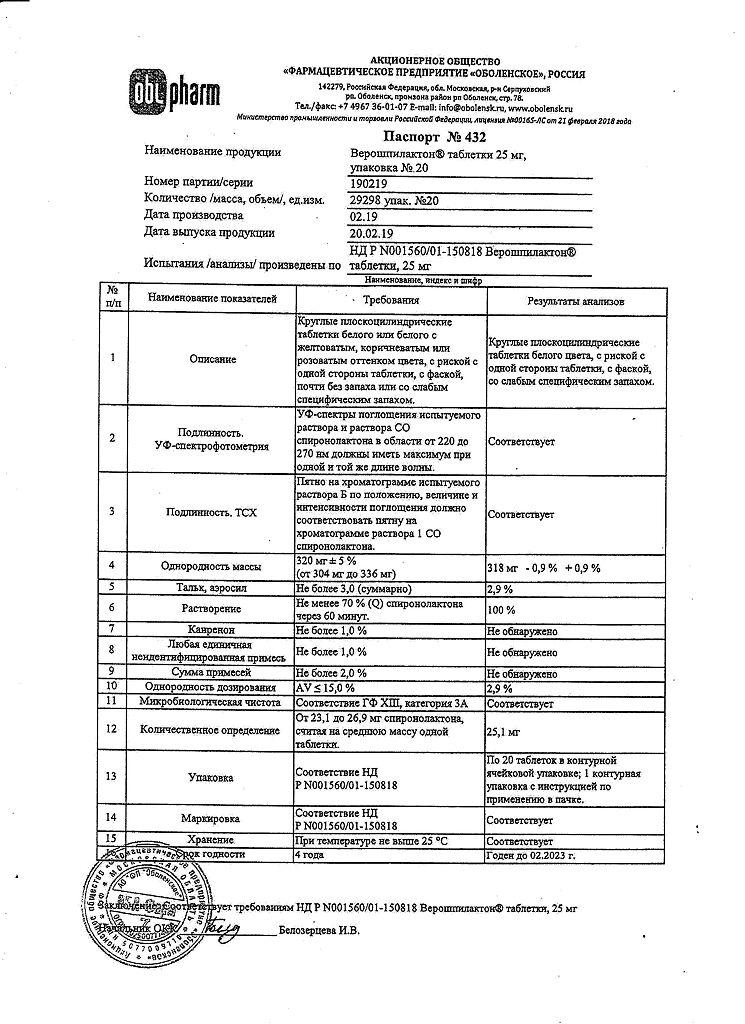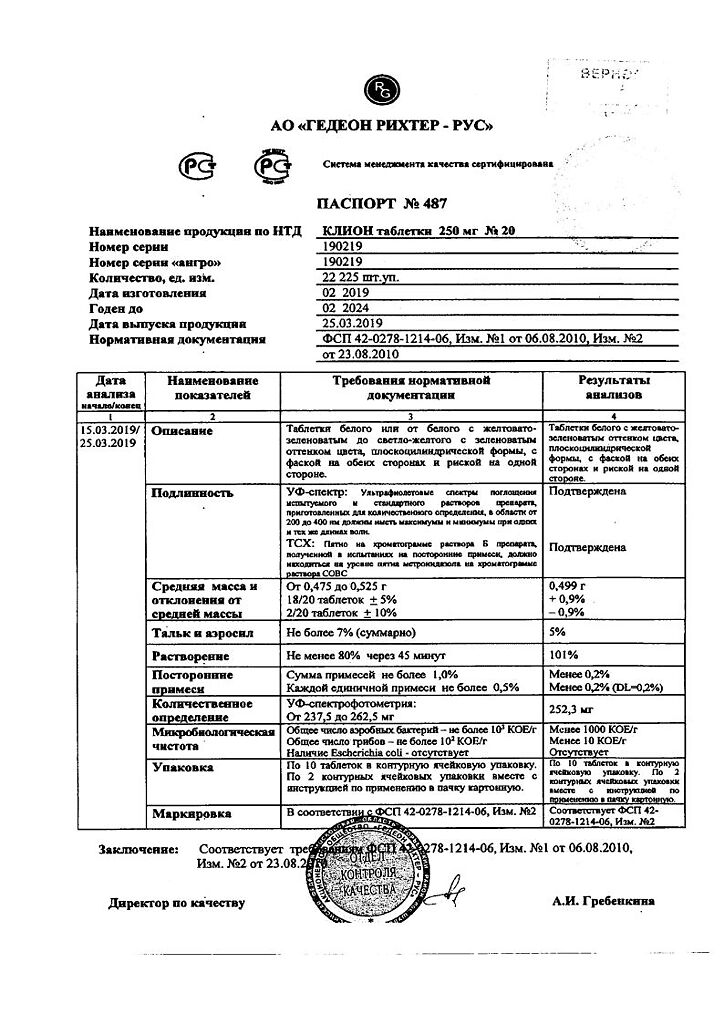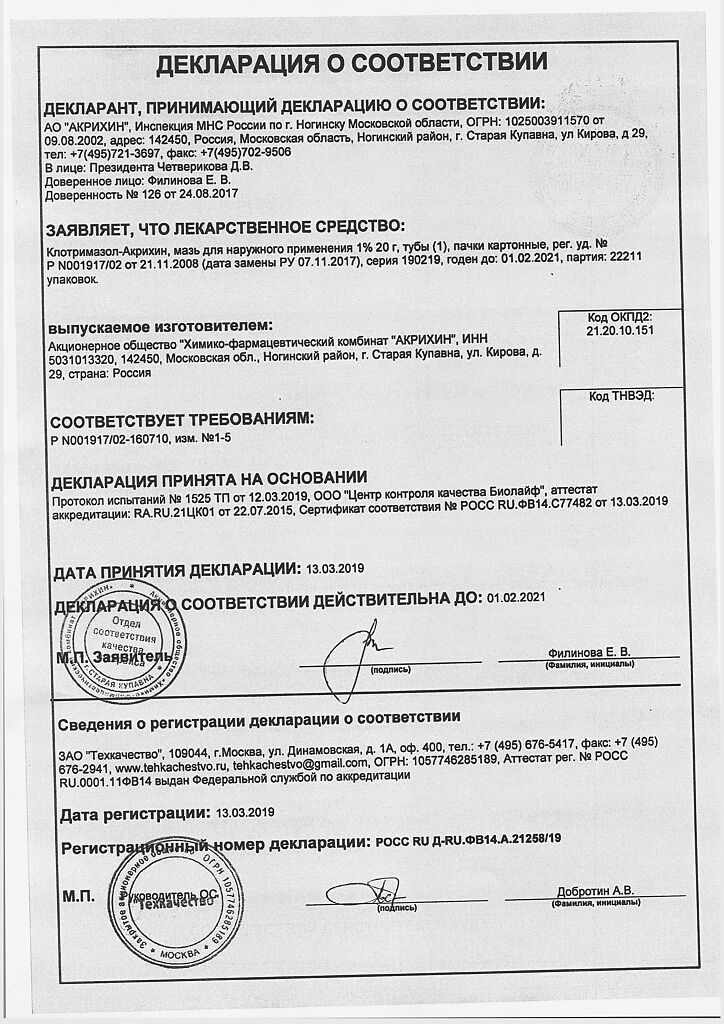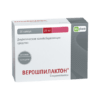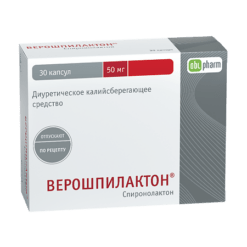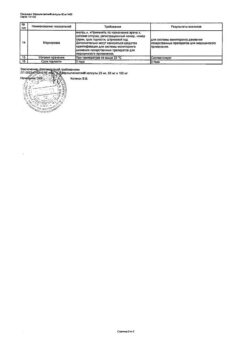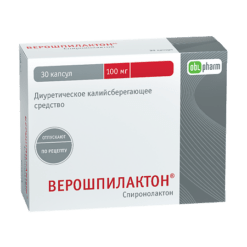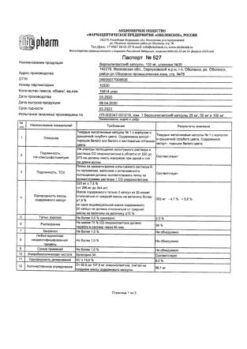No products in the cart.
Veroshpilactone, tablets 25 mg 20 pcs
€3.44 €3.13
Description
Pharmacodynamics
Spironolactone is a potassium-saving diuretic, a specific prolonged aldosterone antagonist (mineralocorticosteroid hormone of the adrenal cortex). In the distal parts of the nephron, spironolactone prevents aldosterone retention of sodium water and suppresses potassium withdrawal effect of aldosterone, reduces the synthesis of permease in aldosterone-dependent part of the collecting tubes and distal tubules. By binding to aldosterone receptors it increases excretion of sodium, chlorine and water ions with urine, decreases excretion of potassium ions and urea, reduces urine acidity.
The maximum effect is observed 7 hours after oral administration and lasts at least 24 hours. The hypotensive effect of the drug is due to the diuretic effect which is not constant: the diuretic effect is seen on the 2nd-5th day of treatment.
Pharmacokinetics
When administered orally, it is quickly and completely absorbed from the gastrointestinal tract and converted to active metabolites: metabolite containing sulfur (80%) and partially canrenone (20%). The maximum concentration (Cmax) of canrenone in blood plasma is reached after 2-4 hours, its binding to plasma proteins is 90%. Binding with blood plasma proteins is about 98% (canrenone 90%).
After daily administration of 100 mg of spironolactone for 15 days, the Cmax reaches 80 mg/mL, the time to reach Cmax after another morning administration is 2-6 hours. Spironolactone penetrates poorly into organs and tissues, with itself and its metabolites penetrating the placental barrier and cancreon into breast milk. The volume of distribution is 0.05 l/kg. The half-life (T½) of spironolactone is 13-24 hours, active metabolites – up to 15 hours.
Extracted by the kidneys: 50% – as metabolites, 10% – unchanged and partially – in feces. Excretion of canrenone (mainly by kidneys) is biphasic, T½ in the first phase is 2-3 hours, in the second phase – 12-96 hours.
In liver cirrhosis and heart failure, the duration of half-life is prolonged without signs of cumulation, which is more likely in chronic renal failure and hyperkalemia.
Indications
Indications
Essential hypertension (as part of combination therapy);
edema syndrome in chronic heart failure (can be used as monotherapy and in combination with standard therapy);
conditions in which secondary hyperaldosteronism may be detected, including cirrhosis of the liver accompanied by ascites and/or edema, nephrotic syndrome, as well as other conditions accompanied by edema;
hypokalemia/hypomagnesemia (as an adjuvant for its prevention during treatment with diuretics and when it is impossible to use other methods of correcting potassium levels);
primary hyperaldosteronism (Conn’s syndrome) – for a short preoperative course of treatment;
to establish the diagnosis of primary hyperaldosteronism.
Pharmacological effect
Pharmacological effect
Pharmacodynamics
Spironolactone is a potassium-sparing diuretic, a specific antagonist of long-acting aldosterone (mineralocorticosteroid hormone of the adrenal cortex). In the distal parts of the nephron, spironolactone prevents the retention of sodium and water by aldosterone and suppresses the potassium-removing effect of aldosterone, reduces the synthesis of permeases in the aldosterone-dependent area of the collecting ducts and distal tubules. By binding to aldosterone receptors, it increases the excretion of sodium, chlorine and water ions in the urine, reduces the excretion of potassium and urea ions, and reduces the acidity of urine.
The maximum effect is observed 7 hours after oral administration and lasts for at least 24 hours. The hypotensive effect of the drug is due to the presence of a diuretic effect, which is not constant: the diuretic effect appears on days 2-5 of treatment.
Pharmacokinetics
When taken orally, it is quickly and completely absorbed from the gastrointestinal tract and converted into active metabolites: a metabolite containing sulfur (80%) and partially canrenone (20%). The maximum concentration (Cmax) of canrenone in the blood plasma is reached after 2-4 hours, its association with blood plasma proteins is 90%. Communication with blood plasma proteins is about 98% (canrenone – 90%).
After daily intake of 100 mg of spironolactone for 15 days, Cmax reaches 80 mg/ml, the time to reach Cmax after the next morning dose is 2-6 hours. Spironolactone penetrates poorly into organs and tissues, while itself and its metabolites penetrate the placental barrier, and cancreon passes into breast milk. Volume of distribution – 0.05 l/kg. The half-life (T½) of spironolactone is 13-24 hours, of active metabolites – up to 15 hours.
Excreted by the kidneys: 50% – in the form of metabolites, 10% – unchanged and partially in feces. Canrenone excretion (mainly by the kidneys) is two-phase, T½ in the first phase is 2-3 hours, in the second – 12-96 hours.
In liver cirrhosis and heart failure, the half-life increases without signs of accumulation, the likelihood of which is higher in chronic renal failure and hyperkalemia.
Special instructions
Special instructions
There may be a temporary increase in serum urea nitrogen levels, especially with reduced renal function and hyperkalemia. Reversible hyperchloremic metabolic acidosis is possible.
In case of kidney and liver diseases, as well as in old age, regular monitoring of serum electrolytes and kidney function is necessary.
The drug makes it difficult to detect digoxin, cortisol and adrenaline in the blood. Despite the lack of a direct effect on carbohydrate metabolism, the presence of diabetes mellitus, especially with diabetic nephropathy, requires special caution due to the possibility of developing hyperkalemia.
When treating with non-steroidal anti-inflammatory drugs, you should
monitor kidney function and blood electrolyte levels.
Foods rich in potassium should be avoided.
During treatment, alcohol consumption is contraindicated.
The effect of the drug on the ability to drive a car and operate machinery, the operation of which is associated with an increased risk of injury.
During the initial period of treatment, it is prohibited to drive a car or engage in activities that require increased concentration and speed of psychomotor reactions. The duration of restrictions is set individually.
Active ingredient
Active ingredient
Spironolactone
Composition
Composition
1 tablet contains
active ingredient:
spironolactone – 0.025 g
excipients:
magnesium stearate,
lactose (milk sugar),
potato starch,
colloidal silicon dioxide (Aerosil),
talc
Contraindications
Contraindications
Hypersensitivity to any of the components of the drug Verospilactone,
Addison’s disease
hyperkalemia,
hyponatremia,
severe renal failure (creatinine clearance less than 10 ml/min),
anuria,
pregnancy,
breastfeeding period.
Children’s age (up to 3 years), due to the solid dosage form.
With caution: hypercalcemia, metabolic acidosis, atrioventricular block (hyperkalemia enhances it), diabetes mellitus (with confirmed or suspected chronic renal failure), diabetic nephropathy, surgical interventions, taking medications that cause gynecomastia, local and general anesthesia, old age, menstrual irregularities, breast enlargement, liver failure.
Side Effects
Side Effects
From the gastrointestinal tract: nausea, vomiting, diarrhea, ulceration and bleeding from the gastrointestinal tract, gastritis, intestinal colic, abdominal pain, constipation.
From the liver: impaired liver function.
From the central nervous system: ataxia, lethargy, dizziness, headache, drowsiness, lethargy, confusion, muscle spasm. From the hematopoietic system: leukopenia (including agranulocytosis), thrombocytopenia.
From the endocrine system: deepening of the voice, in men – gynecomastia (the likelihood of development depends on the dose, duration of treatment and is usually reversible); decreased potency and erection; in women – menstrual irregularities; dysmenorrhea, amenorrhea, metrorrhagia during menopause, hirsutism, pain in the mammary glands, breast carcinoma (no connection with the drug has been established).
Metabolic disorders: hypercreatininemia, increased urea concentration, disturbance of water-salt metabolism (hyperkalemia, hyponatremia) and acid-base balance (metabolic hyperchloremic acidosis or alkalosis), hyperuricemia.
When using Verospilactone, gynecomastia may develop. The likelihood of gynecomastia depends on the dose of the drug and the duration of therapy. In this case, gynecomastia is usually reversible and disappears after discontinuation of the drug, and only in rare cases the mammary gland remains somewhat enlarged.
Allergic reactions: urticaria, rarely maculopapular and erythematous rash, drug fever, itching.
Skin disorders: alopecia, hypertrichosis.
From the urinary system: acute renal failure.
From the musculoskeletal system: cramps of the calf muscles.
Interaction
Interaction
Reduces the effect of anticoagulants, indirect anticoagulants (heparin, coumarin derivatives, indandinone) and the toxicity of cardiac glycosides (since normalizing the level of potassium in the blood prevents toxicity).
Enhances the metabolism of phenazole (antipyrine).
Reduces the sensitivity of blood vessels to noepinephrine (requires caution during anesthesia), increases the half-life of digoxin – intoxication with digoxin is possible.
Increases the toxic effect of lithium due to decreased clearance.
Accelerates the metabolism and excretion of carbenoxolone.
Carbenoxolone promotes sodium retention by spironolactone.
Glucocorticosteroid drugs and diuretics (benzothiadiazine derivatives, furosemide, ethacrynic acid) enhance and accelerate the diuretic and natriuretic effects.
Enhances the effect of diuretic and antihypertensive drugs. Nonsteroidal anti-inflammatory drugs reduce the diuretic and natriuretic effects, increasing the risk of developing hyperkalemia.
Glucocorticosteroid drugs enhance the diuretic and natriuretic effect in cases of hypoalbuminemia and/or hyponatremia.
The risk of developing hyperkalemia increases when taken with potassium preparations, potassium supplements and potassium-sparing diuretics, angiotensin-converting enzyme inhibitors (acidosis), angiotensin P antagonists, aldosterone blockers, indomethacin, cyclosporine. Salicylates and indomethacin reduce the diuretic effect.
Ammonium chloride and cholestyramine contribute to the development of hyperkalemic metabolic acidosis.
Fludrocortisone causes a paradoxical increase in the tubular potassium section. Reduces the effect of mitotane.
Enhances the effect of triptorelin, buserelin, gonadorelin.
Overdose
Overdose
Symptoms: nausea, vomiting, dizziness, diarrhea, skin rash, hyperkalemia (paresthesia, muscle weakness, arrhythmias), hyponatremia (dry mouth, thirst, drowsiness), hypercalcemia, dehydration, increased urea concentration.
Treatment: gastric lavage, symptomatic treatment of dehydration and arterial hypotension.
In case of hyperkalemia, it is necessary to normalize water-electrolyte metabolism with the help of potassium-removing diuretics, rapid parenteral administration of a 5-20% dextrose solution with insulin at the rate of 0.25-0.5 units per 1 g of dextrose; can be re-entered if necessary.
In severe cases, hemodialysis is performed.
Storage conditions
Storage conditions
In a dry place, protected from light
Shelf life
Shelf life
2 years
Manufacturer
Manufacturer
Alium JSC, Russia
Additional information
| Shelf life | 2 years |
|---|---|
| Conditions of storage | In a dry, light-protected place |
| Manufacturer | Alium JSC, Russia |
| Medication form | pills |
| Brand | Alium JSC |
Other forms…
Related products
Buy Veroshpilactone, tablets 25 mg 20 pcs with delivery to USA, UK, Europe and over 120 other countries.

